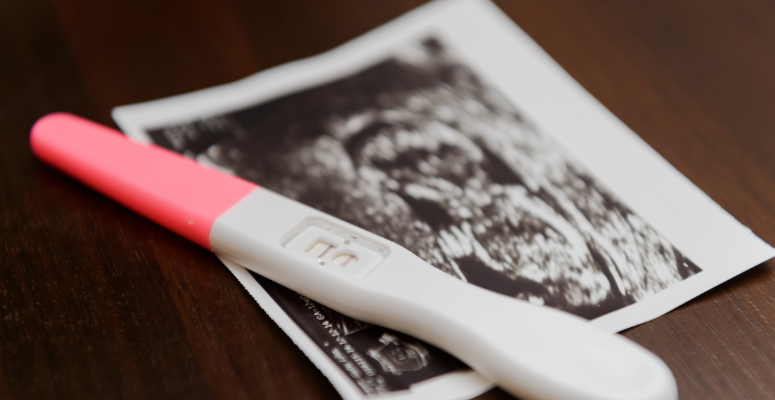
Pregnancy is beautiful, but it also takes a significant toll on a woman’s physical health. The body changes to accommodate the baby as it grows as well as prepare for giving birth. These changes can affect nearly every part of a woman’s body, especially her back.
Back pain can stem from a variety of reasons, but sciatic nerve pain is one of the most common causes. Even though everyone experiences back pain every now and then, pregnancy increases the likelihood of feeling sciatic nerve pain. By learning about possible reasons for the nerve pain, and the treatment options that can help, pregnant women can work to alleviate the ache.
We’ll discuss the basics of sciatic nerve pain, reasons why you may experience sciatic nerve pain during pregnancy and treatment options that can help.
The basics of sciatic nerve pain
Let’s start off by defining what it means to feel sciatic nerve pain. The sciatic nerve starts in your lower back, or the lumbar spine, and runs down the back of both legs. It’s the longest nerve in the body and helps you move the muscles in your legs. It also provides sensation in your lower legs and feet.
Sciatic nerve pain, also known as sciatica, is a common issue that affects up to 10% of people with lower back pain. It occurs when there’s pressure placed on the nerve.
Sciatic nerve pain tends to radiate, and it’s often felt on one side of the body. It can occur alongside other symptoms, including:
- Weak knees.
- Numbness.
- Burning sensation.
- Difficulty bending backward or forward.
- Abnormal reflexes.
5 possible causes for sciatic nerve pain during pregnancy
Back pain is just one of many pregnancy symptoms that are often talked about, along with morning sickness, unusual cravings and fatigue. But many are unaware that the ache could be sciatic nerve pain, which is especially common in the third trimester.
Even though a herniated disc is often the cause of sciatica, it’s less likely during pregnancy than other causes. There are a variety of reasons why you may experience sciatic nerve pain during pregnancy, including:
- Weight gain — As you gain weight throughout your pregnancy, you put more and more pressure on the sciatic nerve.
- Fluid retention — As your hormones change, your body builds up extra fluid to help soften the body so that it can expand as the baby develops. The retained fluid can put pressure on the sciatic nerve where it runs through the pelvis.
- Uterus expansion — The sciatic nerve near your lumbar region can be impacted as your uterus expands to accommodate your baby.
- Position of the baby — It’s possible that the head of your baby is resting directly on the sciatic nerve, especially as it settles into its birth position toward the end of your third trimester.
- Center of gravity — Your center of gravity shifts as your breasts and stomach grow. The natural curve of the lumbar spine, known as the lordosis, can stretch as your center of gravity moves, pinching the sciatic nerve near your buttocks and pelvic area.
Treatments for sciatic nerve pain during pregnancy
Even though sciatic nerve pain during a pregnancy is temporary, you shouldn’t have to grin and bear it. There are several safe, natural and noninvasive treatment options you can test out that will help to alleviate your back pain as you approach your due date. Some are self-care options, while some require the assistance of a health care professional.
Treatment options for sciatic nerve pain during pregnancy include:
- Warm compress — If you’re at home and looking for temporary relief from your sciatic nerve pain, laying a warm compress on the affected area may help. It increases blood circulation to the area and relaxes the surrounding muscles.
- Sleeping position adjustments — While changing your sleeping position doesn’t provide long-term relief for sciatic nerve pain, it can help you get better rest at night. Having a mattress with extra back support, along with placing a pillow between your knees, can also ease some of the pressure off the sciatic nerve.
- Physical therapy — A physical therapist can use a variety of techniques to alleviate sciatica, including targeted exercises to strengthen the surrounding soft tissue and reduce the pressure on the nerves. They may also use joint mobilization, a manual therapy technique that helps increase the affected joint’s range of motion.
Find effective and affordable care for sciatic nerve pain during pregnancy from an Alliance PTP partner
Physical therapy can be an effective and affordable way to treat sciatic nerve pain during pregnancy. You just need the right partner to provide it.
Alliance Physical Therapy Partners has you covered. We can help you find a PT clinic near you that’s staffed with experienced and caring physical therapists.
Prefer to meet with a physical therapist virtually? We’ve got you covered there, too.
Reach out to us today so we can help you find the physical therapy that works best for your needs.
